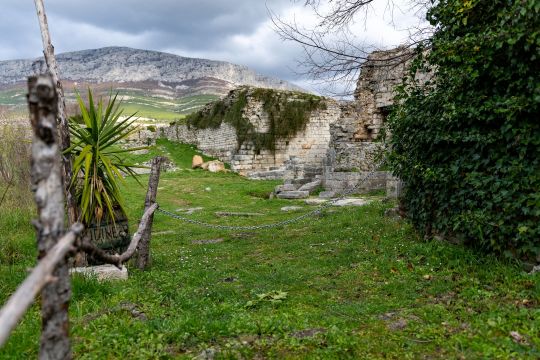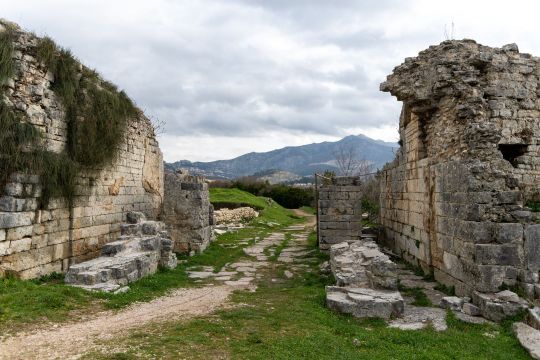In the eastern walls of the initial town, the Dyggve’s urbs vetus, there was a large gate. It was studied firstly by F. Carrara in 1846, to be fully excavated by Bulić in 1906. Later on, a water duct was built over the gate, taking water to the town’s southern parts. For its monumentality, the gate was named picturesquely Porta Caesarea.
Both the gate and the walls next to it are evidently old. Heinz Kähler considers that they could have been built at the beginning of the first century A.D., i.e. in the last years of August’s rule (died in 14 A.D.). Then, at the time of the prefect P. K. Dolabella, the building of many major roads was commenced, some of them starting just from Salona and leading to the Delmat hinterlands, among other lands. They were built by the army, as this is testified by numerous monuments’ inscriptions, making the archaeologist F. Bulić who wittily commented: “Soldiers did not waste time in their camps as they do today in their tents all over Europe, dealing only with arms in preparations to slaughter the mankind.”
One of the Salonitan roads went westward and another went eastward, leaving the initial town by this very gate. When the town was extended eastward, a large residential complex was built by the gate, studied in 1969-1971 (N. Cambi and the author of this book). Further to the north, in the fourth century, the Christian bishopric centre was built. This has been a subject of interest to the Salonitan monument researchers for almost a century now
[Edit mode] Swiper Gallery: att Gradska vrata










